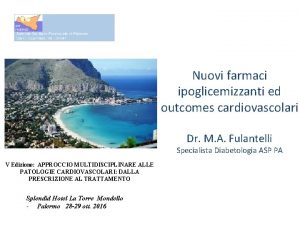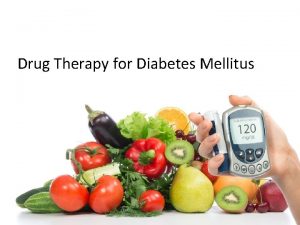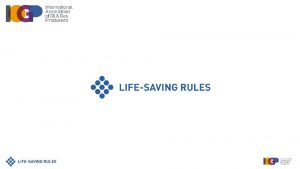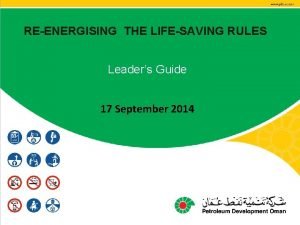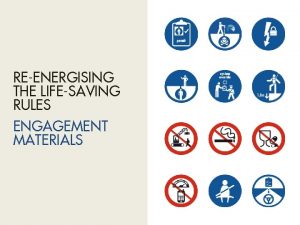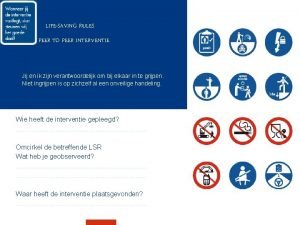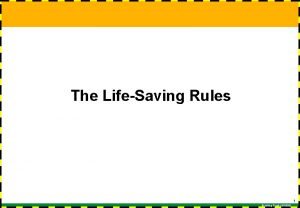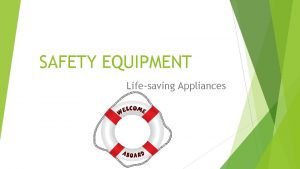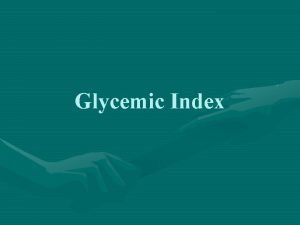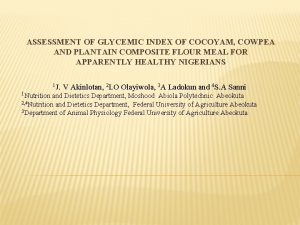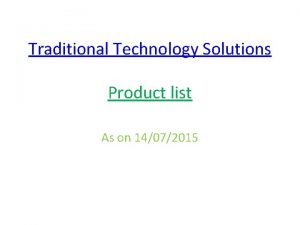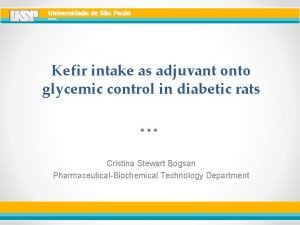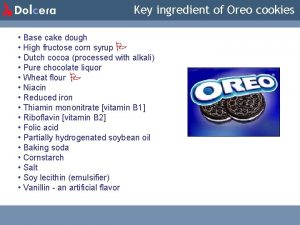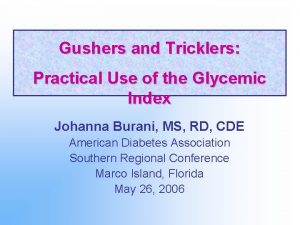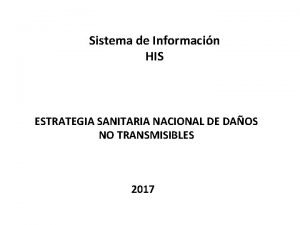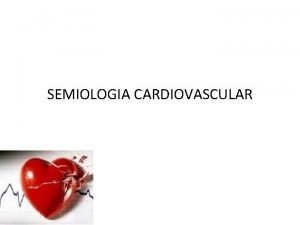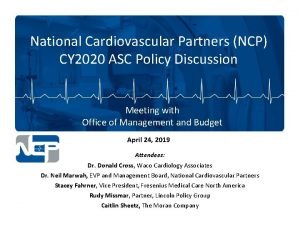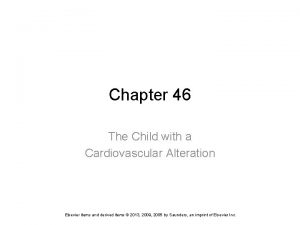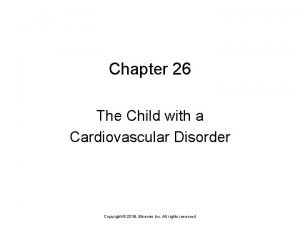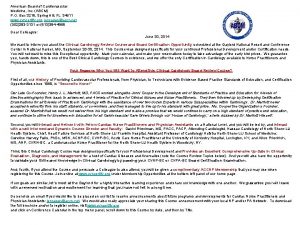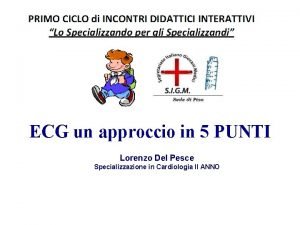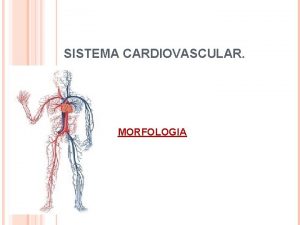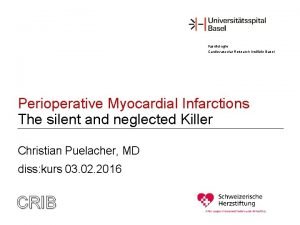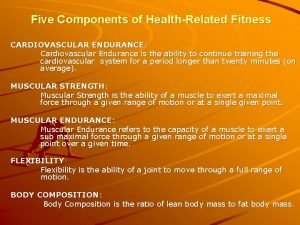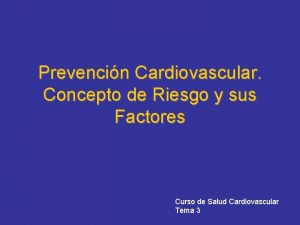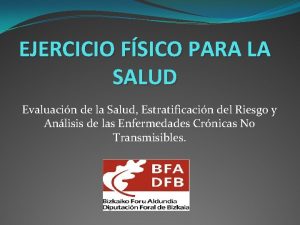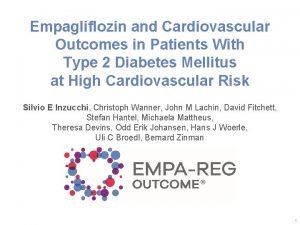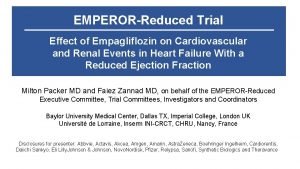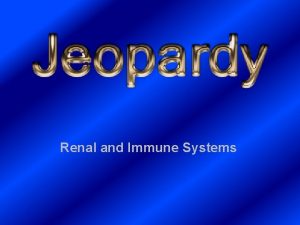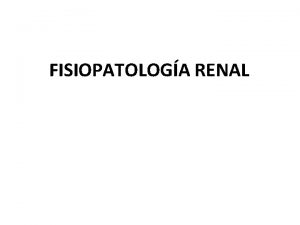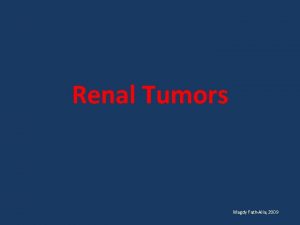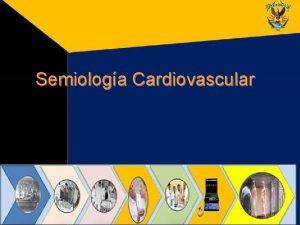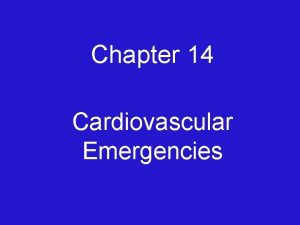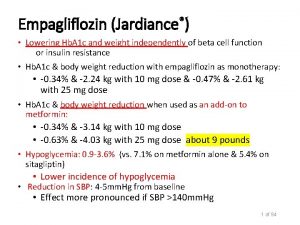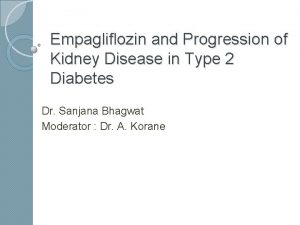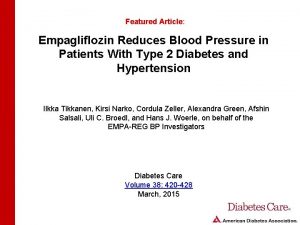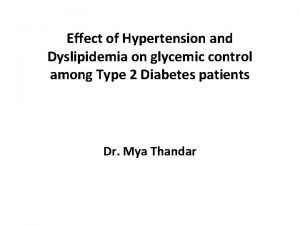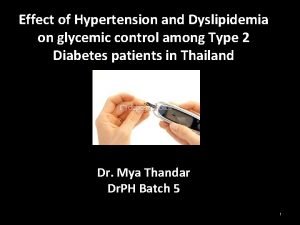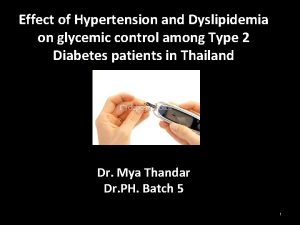Empagliflozin Glycemic control and lifesaving cardiovascular and renal























































- Slides: 55

Empagliflozin: Glycemic control and lifesaving cardiovascular and renal benefits Dr Hossein Chiti, MD Endocrinologist , Associate Professor of Zanjan university of medical science

Objectives • • Brief Review of Kidney Role in Glucose Homeostasis Empagliflozin Mechanism of Action Empagliflozin Efficacy Studies Empagliflozin Safety Profile EMPA-REG OUTCOME® Trial EMPA-REG RENAL® Trial EMPEROR-REDUCED Trial Conclusion 2

Brief Review of Kidney Role in Glucose Homeostasis 3

Kidney Plays a Significant Role in Glucose Balance Glucose in diet ~180 g/day ² Reabsorption¹ Filtration & Reabsorption ~180 g/day Utilization¹ Glucose Utilization ~250 g/day ² ~70 g/day Produced by gluconeogenesis or glycogenolysis 20% is produced by the kidney Brain ~125 g/day Rest of body ~125 g/day Production¹ (gluconeogenesis) Kidney Utilizes ~25 -30 g/day Produces ~15 -55 g/day 1. Diabetes Med 2010; 27(2): 136 -42 , 2. J Intern Med 2007; 261(1): 32 -4 4

Glucose Transporters • Glucose is essential for energy production in the living body. • Glucose transporters play a critical role in various organs. • They are classified into two families¹ʼ²: • facilitative glucose transporters (GLUTs) • sodium-dependent glucose transporters (SGLTs) • SGLTs 1 -6: active energy dependent glucose transporters¹ʼ² • SGLT 1: low capacity, high affinity, mostly in intestine • SGLT 2: high capacity, low affinity, mostly in kidney 1. Diabetes Ther. 2013; 4(2): 195– 220, 2. J Clin Endocrinol Metab. 2010; 95(1): 34 -42 5

Empagliflozin Mechanism of Action 6

Renal glucose re-absorption in healthy individuals Filtered glucose load 180 g/day¹ SGLT 2 ~ 90% SGLT 1 ~ 10% 7 1. Diabet Med. 2010; 27(2): 136 -42

Renal glucose re-absorption in patients with diabetes Filtered glucose load > 180 g/day¹ SGLT 2 ~ 90% SGLT 1 ~ 10% 8 1. Diabet Med. 2010; 27(2): 136 -42

Urinary glucose excretion via SGLT 2 inhibition Filtered glucose load > 180 g/day SGLT 2 inhibitor SGLT 2 SGLT 1 SGLT 2 inhibitors reduce glucose re-absorption in the proximal tubule, leading to urinary glucose excretion* and osmotic diuresis¹ *Loss of ~ 80 g of glucose/day 1. Diabet Med. 2010; 27(2): 136 -42 9

Expected Clinical Effects of SGLT 2 Inhibition Reduced glycemia Hb. A 1 c Reduction 0. 6 - 1% Loss of calories Weight loss 2 – 3 kg Reduced sodium load BP reduction 3 – 5 mm. Hg Increased glucose excretion Increased sodium excretion Abdul-Ghani MA, et al. Endocri Rev. 2011; 32: S 15 -S 31. 10

Empagliflozin in clinical studies: Efficacy 11

Δ Hb. A 1 c Across Different Background Therapy Empagliflozin® vs. Placebo* Phase III pooled efficacy analysis Empagliflozin® 10 mg QD Adjusted mean (SE) difference vs placebo in change from baseline in Hb. A 1 c (%) Pooled data 0, 0 Pooled Monotherapy 1 MET 2, 3 MET+SU 5 PIO 4 Empagliflozin® 25 mg QD Insulin 78 week 6 Mild RI 7 -0, 4 -0, 8 -0, 62 -0, 68 -0, 57 -0, 74 -0, 46 -0, 48 -0, 61 -0, 64 -0, 59 -0, 62 -0, 52 -0, 68 -0, 85 -1, 2 Patients, n 831 821 224 217 213 165 168 225 216 169 155 BL Hb. A 1 c, % 7. 98 7. 96 7. 87 7. 86 7. 94 7. 86 8. 1 8. 07 8. 10 8. 3 224 98 97 8. 02 7. 96 BL, baseline; MET, metformin; PIO, pioglitazone; QD, once daily; RI, renal impairment; SE, standard error; SU, sulphonylurea. * All data are placebo-corrected and statistically significant unless otherwise marked 1. Lancet Diabetes Endocrinol. 2013; 1(3): 208 -19; 2. Diabetes. 2013; 62(suppl 1 A); A 21 (P 69 -LB); 3. Diabetes Care. 2014; 37(6): 1650 -9 12 4. Diabetes Obes Metab. 2014; 16(2): 147– 158; 5. Diabetes Care. 2013; 36(11): 3396– 404; 6. Diabetologia. 2013; 56(suppl 1); S 372 (P 931) ; 7. The Lancet Diabetes & Endocrinology 2014; 2(5), 369– 384.

Δ Body Weight Across Different Background Therapy Empagliflozin® vs. Placebo* Phase III pooled efficacy analysis Empagliflozin® 10 mg QD Adjusted mean (SE) difference vs placebo in change from baseline in body weight (kg) Pooled data 0, 0 Pooled Monotherapy 1 MET 2 -3 PIO 4 MET+SU 5 Empagliflozin® 25 mg QD Insulin 78 week 6 Mild RI 7 -1, 0 -2, 0 -1, 81 -2, 01 -1, 93 -2, 15 -1, 63 -2, 01 -1, 95 -1, 81 -1, 76 -1, 43 -1, 99 -3, 0 -2, 00 -2, 90 -2, 80 -4, 0 Patients, n BL BW (kg) 831 821 78. 77 79. 10 224 217 213 165 168 225 216 169 155 98 97 78. 4 77. 80 81. 6 82. 2 78. 0 78. 90 77. 1 77. 5 91. 6 94. 7 92. 1 88. 7 BL, baseline; BW, body weight; MET, metformin; PIO, pioglitazone; QD, once daily; RI, renal impairment; SE, standard error; SU, sulphonylurea. * All data are placebo-corrected and statistically significant unless otherwise marked 1. Lancet Diabetes Endocrinol. 2013; 1(3): 208 -19; 2. Diabetes. 2013; 62(suppl 1 A); A 21 (P 69 -LB); 3. Diabetes Care. 2014; 37(6): 1650 -9 4. Diabetes Obes Metab. 2014; 16(2): 147– 158; 5. Diabetes Care. 2013; 36(11): 3396– 404; 6. Diabetologia. 2013; 56(suppl 1); S 372 (P 931) ; 7. The Lancet Diabetes & Endocrinology 13 2014; 2(5), 369– 384.

Δ SBP Across Different Background Therapy Empagliflozin® vs. Placebo* Adjusted mean (SE) difference vs placebo in change from baseline in SBP (mm. Hg) Phase III pooled efficacy analysis Empagliflozin® 10 mg QD Pooled data Pooled Monotherapy 1 MET 2 -3 PIO 4 MET+SU 5 Empagliflozin® 25 mg QD Insulin 78 week 6 Mild RI 7 0, 0 -2, 0 -4, 0 -2, 60 -3, 40 -3, 80 -6, 0 † -2, 40 -2, 10 -3, 40 -4, 10 -2, 70 -3, 90 -4, 70 -4, 80 -3, 60 -4, 20 -5, 10 -8, 0 Patients, n BL SBP(mm. Hg) 831 821 224 217 213 129. 6 129 133 129. 9 129. 6 130 165 168 225 126. 5 125. 9 128. 7 216 169 155 98 97 129. 3 132. 4 132. 8 137. 4 133. 7 BL, baseline; MET, metformin; PIO, pioglitazone; QD, once daily; RI, renal impairment; SBP, systolic blood pressure; SE, standard error; SU, sulphonylurea. *All statistically significant except when marked as †. 1. Lancet Diabetes Endocrinol. 2013; 1(3): 208 -19; 2. Diabetes. 2013; 62(suppl 1 A); A 21 (P 69 -LB); 3. Diabetes Care. 2014; 37(6): 1650 -9 4. Diabetes Obes Metab. 2014; 16(2): 147– 158; 5. Diabetes Care. 2013; 36(11): 3396– 404; 6. Diabetologia. 2013; 56(suppl 1); S 372 (P 931) ; 7. The Lancet Diabetes & Endocrinology 14 2014; 2(5), 369– 384.

Empagliflozin Safety profile 15

Hypoglycaemic Events • Phase III safety and tolerability analysis Percentage of patients with confirmed hypoglycaemia† (%) 20 Placebo 16 16, 1 ® Empagliflozin ® 10 mg QD Empagliflozin 25 mg QD 12 11, 5 8, 4 8 5, 2 4 0, 8 1, 2 1, 3 1, 8 0, 4 0, 5 0, 4 0 1, 4 Monotherapy 1 Add-on to MET 2 2, 9 2, 4 1, 2 4 3 2 Pooled data excl. 1 SU background 1, 8 4, 0 1 Add-on to PIO 3 Pooled data incl. SU 1 Add-on to MET + SU background 4 MET, metformin; PIO, pioglitazone; QD, once daily; SU, sulphonylurea. †Confirmed events; plasma glucose ≤ 70 mg/d. L and/or requiring assistance 1. Lancet Diabetes Endocrinol. 2013; 1(3): 208– 219; 2. Diabetes Care. 2014 ; 37(6): 1650 -9 3. Diabetes Obes Metab. 2014; 16(2): 147– 158; 4. Diabetes Care. 2013; 36(11): 3396– 404 16

Events Consistent with UTI Stratified by Gender 1 -4 Patients with events consistent with UTI (%) Phase III pooled safety and tolerability analysis Male vs. female patients 30 Placebo (n = 401/424) 25 ® 18, 5 20 15, 9 15 10 13, 0 8, 2 9, 3 Empagliflozin 10 mg QD (n = 367/463) ® Empagliflozin 25 mg QD (n = 358/464) 7, 5 3, 8 5 1, 9 1, 1 0 All patients with events Female patients Male patients QD, once daily; UTI, urinary tract infection. 1. Lancet Diabetes Endocrinol. 2013; 1(3): 208– 219; 2. Diabetes Care. 2014 ; 37(6): 1650 -9 3. Diabetes Obes Metab. 2014; 16(2): 147– 158; 4. Diabetes Care. 2013; 36(11): 3396– 404 17

Events consistent with UTI stratified by history of UTI Phase III pooled safety and tolerability analysis With/without history of chronic/recurrent UTI Patients with events consistent with UTI (%) 30 26, 2 25 23, 9 20, 8 Placebo (n = 53/772) ® 20 Empagliflozin 10 mg QD (n = 42/788) 15 Empagliflozin 25 mg QD (n = 46/776) 10 ® 8, 2 9, 3 7, 5 7, 4 8, 4 6, 6 5 0 All patients with events With a history of chronic/recurrent UTI Without a history of chronic/recurrent UTI QD, once daily; UTI, urinary tract infection. 1. Lancet Diabetes Endocrinol. 2013; 1(3): 208– 219; 2. Diabetes Care. 2014 ; 37(6): 1650 -9 3. Diabetes Obes Metab. 2014; 16(2): 147– 158; 4. Diabetes Care. 2013; 36(11): 3396– 404 18

Events Consistent with UTI Distribution of Events Severity 1 -4 Phase III pooled safety and tolerability analysis 8 7 7, 5 6, 9 Placebo (n = 825) 6, 7 6 Patients (%) ® Empagliflozin 10 mg QD (n = 830) ® 5 Empagliflozin 25 mg QD (n = 822) 4 3 1, 7 2 1, 1 1 0, 9 0, 2 0 Mild Moderate 0, 1 0 Severe QD, once daily; UTI, urinary tract infection. The intensity of the adverse event was to be judged by the investigator as • Mild (awareness of signs or symptoms which were easily tolerated), • Moderate (enough discomfort to cause interference with usual activity), or • Severe (incapacitating or causing inability to work or to perform usual activities). 1. Roden M, et al. Lancet Diabetes Endocrinol. 2013; 1(3): 208– 219 (EMPA-REG MONO); 2. Häring H-U, et al. Diabetes Care. 2014 (EMPA-REG MET in press); 3. Kovacs C, et al. Diabetes Obes Metab. 2014; 16(2): 147– 158 (EMPA-REG PIOG); 3. Häring H-U, et al. Diabetes Care. 2013; 36(11): 3396– 404 (EMPA-REG METSUl); 4. Kim G, et al. Diabetes. 2013; (suppl 1): (P 74 -LB). 19

Genital Infection Distribution of Events Severity 1 -4 Phase III pooled safety and tolerability analysis Placebo (n = 825) 3, 5 2, 90 Patients (%) 3, 0 Empagliflozin 10 mg QD ® (n = 830) 2, 40 2, 5 Empagliflozin 25 mg QD ® (n = 822) 2, 0 1, 30 1, 5 1, 0 1, 20 0, 60 0, 5 0, 10 0, 0 Mild Moderate 0, 00 Severe QD, once daily 1. Lancet Diabetes Endocrinol. 2013; 1(3): 208– 219; 2. Diabetes Care. 2014 ; 37(6): 1650 -9 3. Diabetes Obes Metab. 2014; 16(2): 147– 158; 4. Diabetes Care. 2013; 36(11): 3396– 404 20

EMPA-REG OUTCOME® 21

Objective¹ To examine the long-term effects of empagliflozin versus placebo, in addition to standard of care, on CV morbidity and mortality in patients with type 2 diabetes and high risk of CV events 1. N Engl J Med 2015; 373: 2117 -2128 22

Trial Design • 42 Countries, 590 sites • Randomized, double-blind, placebo-controlled CV outcomes trial¹. Placebo (n=2333) • Key inclusion criteria • • Adults with T 2 DM BMI ≤ 45 kg/m 2 Hb. A 1 c 7– 10%* Established cardiovascular disease Screening (n=11531) Randomised and treated (n=7020) • Prior MI, CAD, stroke, unstable angina or occlusive PAD Empagliflozin 10 mg (n=2345) Empagliflozin 25 mg (n=2342) • Key exclusion criteria • e. GFR <30 m. L/min/1. 73 m 2 (MDRD) ü The trial was to continue until at least 691 patients experienced an adjudicated primary outcome event. BMI, body mass index; e. GFR, estimated glomerular filtration rate; MDRD, Modification of Diet in Renal Disease *No glucose-lowering therapy for ≥ 12 weeks prior to randomisation or no change in dose for ≥ 12 weeks prior to randomisation or, in the case of insulin, unchanged by >10% compared to the dose at randomisation 1. N Engl J Med 2015; 373: 2117 -2128 23

Pre-specified primary and key secondary outcomes Cardiovascular death Non-fatal myocardial infarction MACE Non-fatal stroke 1. N Engl J Med 2015; 373: 2117 -2128 Additional components may be included Hospitalization for unstable angina Key components of MACE (hard endpoints of atherosclerotic disease) Additional components for MACE-plus 24

Primary Outcome: 3 -point MACE (CV death, Nonfatal MI, Nonfatal stroke)¹ 1. N Engl J Med 2015; 373: 2117 -2128 25

EMPA-REG OUTCOME®CV Death¹ 1. N Engl J Med 2015; 373: 2117 -2128 26

EMPA-REG OUTCOME® Hospitalization for Heart Failure¹ 1. N Engl J Med 2015; 373: 2117 -2128 27

EMPA-REG OUTCOME® All-cause Mortality¹ 1. N Engl J Med 2015; 373: 2117 -2128 28

Adverse events¹ʼ² Placebo (n=2333) Empagliflozin 10 mg (n=2345) Empagliflozin 25 mg (n=2342) n (%) Rate One or more AE 1 2139 (91. 7) 178. 67 2112 (90. 1) 150. 34 2118 (90. 4) 148. 36 One or more drug-related* AE 2 549 (23. 5) 11. 33 666 (28. 4) 14. 15 643 (27. 5) 13. 38 One or more AE leading to discontinuation 1 453 (19. 4) 8. 26 416 (17. 7) 7. 28 397 (17. 0) 6. 89 One or more serious AE 1 988 (42. 3) 22. 34 876 (37. 4) 18. 20 913 (39. 0) 19. 39 Rate = per 100 patient-years *As reported by the investigator Patients treated with ≥ 1 dose of study drug 1 -Zinman B et al, . Empagliflozin, cardiovascular outcomes, and mortality in type 2 diabetes. New England Journal of Medicine. 2015; 26; 373(22): 2117 -28. 2 -Zinman B. EASD 2015; Oral presentation 29

EMPA-REG OUTCOME®: summary Empagliflozin in addition to standard of care reduced CV risk and improved overall survival in adults with T 2 D at high CV risk¹ 14% ↓ 3 P-MACE 38% ↓ CV death 32% ↓ All-cause mortality 35% ↓ Heart failure hospitalisations The overall safety profile of empagliflozin was consistent with previous clinical trials and current label information¹ 3 P-MACE, 3 -point major adverse cardiovascular events Empagliflozin is not indicated for CV risk reduction. CV, cardiovascular; T 2 D, type 2 diabetes 1 -Zinman B et al, . Empagliflozin, cardiovascular outcomes, and mortality in type 2 diabetes. New England Journal of Medicine. 2015; 26; 373(22): 2117 -28. 30

EMPA-REG RENAL® 31

1. N Engl J Med 2016; 375: 323 -334 32

Renal Outcomes with Empagliflozin over 3. 2 Years (EMPA-REG RENAL)¹ 38% 39% P<0. 001 20 18 18, 8 16 14 14 12 12, 7 10 8 Patients (%) 16 10 16, 2 12 10 11, 2 8 4 4 2 2 0 0 Incident or worsening nephropathy P<0. 001 9, 7 8 6 5, 5 4 6 6 46% 12 Patients (%) 18 P<0. 001 2 Progression to macroalbuminuria 0 Post-hoc composite outcome* Arrows = relative risk reduction *Doubling of SCr + e. GFR ≤ 45 m. L/min/1. 73 m 2, initiation of renal replacement therapy, or death from renal disease. 1. N Engl J Med 2016; 375: 323 -334 33

SGLT 2 Inhibitors Induce a Temporary Reduction in e. GFR, but Preserve Renal Function Overtime¹ 1 -Wanner C et al, . Empagliflozin and progression of kidney disease in type 2 diabetes. New England Journal of Medicine. 2016; 28; 375(4): 323 -34. 34

NNT to Prevent One Death Across Major Trials in Patients with High CV Risk Simvastatin 1 Ramipril 2 for 5. 4 years for 5 years Simvastatin 3 for 5 years Empagliflozin for 3 years 30 56 56 39 High CV risk 5% diabetes, 26% hypertension 38% diabetes, 46% hypertension High CV risk 20% diabetes, 41% hypertension T 2 DM with high CV risk Pre-statin era Pre-ACEi/ARB era 20% ACEi/ARB >80% ACEi/ARB <29% Statin 17% Statin >75% Statin 2000 2002 2015 1994 92% hypertension 1. Lancet 1994; 344: 1383 -89 ; 2. N Engl J Med 2000; 342: 145 -53; 3. HPS group Lancet 2002; 360: 7– 22; 4. N Engl J Med. 2015; 26; 373(22): 2117 -28. 35

NNT to Prevent One Death Across Major Trials in Patients with High CV Risk Simvastatin 1 Ramipril 2 for 5. 4 years for 5 years Simvastatin 3 for 5 years Empagliflozin for 5 years 30 56 56 25 High CV risk T 2 DM with high CV risk 5% diabetes, 26% hypertension 38% diabetes, 46% hypertension High CV risk 20% diabetes, 41% hypertension Pre-statin era Pre-ACEi/ARB era 20% ACEi/ARB >80% ACEi/ARB <29% Statin 17% Statin >75% Statin 2000 2002 2015 1994 92% hypertension 1. Lancet 1994; 344: 1383 -89 ; 2. N Engl J Med 2000; 342: 145 -53; 3. HPS group Lancet 2002; 360: 7– 22; 4. N Engl J Med. 2015; 26; 373(22): 2117 -28. 36

The EMPEROR-Reduced trial 37

Background¹ üSGLT 2 inhibitors may prevent the onset of HF in high-risk patients, but can these drugs treat HF in those with an established diagnosis? üIf the benefits of SGLT 2 inhibitors on HF are unrelated to their actions on blood glucose, could these drugs exert favorable effects in patients who have HF but who do not have diabetes? üWould such benefits be seen in those who are already receiving appropriate drug treatments for HF? 1 -N. Engl. J. Med 2020. 8; 383(15)1413 -1424.

Objective¹: The EMPEROR-Reduced trial was designed to evaluate the effects of empagliflozin 10 mg once daily (as compared with placebo) in patients with heart failure and a reduced ejection fraction, with or without diabetes, who were already receiving all appropriate treatments for heart failure. 1 -N. Engl. J. Med 2020. 8; 383(15)1413 -1424.

EMPEROR-Reduced: Patient Disposition¹ 7220 patients screened for eligibility 2017 -2019 3730 were randomized Median follow-up 16 month Final vital status Known in 99. 4% 1863 assigned To empagliflozin Drug discontinued Nonfatal adverse event (158) Request by patient (92) Other reason (53) Final vital status known in 1852 Final vital status unknown in 11 1 -N. Engl. J. Med 2020. 8; 383(15)1413 -1424. Not randomized Not eligible (3314) Withdrawal of consent (80) Adverse event(21) Lost to follow-up (19) Other reasons (56) 1867 assigned To placebo Drug discontinued Nonfatal adverse event (176) Request by patient (124) Other reason (44) Final vital status known in 1857 Final vital status unknown in 10

Trial Design¹ Patients must be receiving all appropriate treatments for HF N=1863 Screening period of up to 28 days N=1867 3730 were randomized SOC; Standard Of Care 1 -N. Engl. J. Med 2020. 8; 383(15)1413 -1424.

EMPEROR-Reduced trial specified only three endpoints to be tested in hierarchical manner¹ ü Primary End point Composite of cardiovascular death Or heart failure hospitalization ü First Secondary End point Total (first and recurrent) heart failure hospitalization ü Secondary End point Slope of decline in glomerular Filtration rate over time ü Other pre-specific end points: Composite renal endpoints, KCCQ clinical summary score, total number of hospitalization for any reason , all-cause mortality, new onset diabetes 1 -N. Engl. J. Med 2020. 8; 383(15)1413 -1424.

Inclusion criteria¹ The study included patients with Chronic HF with reduced ejection fraction Key inclusion criteria: • NYHA class II-IV • Elevated NT-pro BNP • Guideline recommendation medication stable ≥ 1 week prior to first visit • e. GFR ≥ 20 ml/min/1. 73 m 2 NYHA; New York Heart Association 1 -N. Engl. J. Med 2020. 8; 383(15)1413 -1424. EF% NT-pro. BNP (pg/ml) Patients without AF Patients with AF ≥ 36 to ≤ 40 ≥ 2500 ≥ 5000 ≥ 31 to ≤ 35 ≥ 1000 ≥ 2000 ≤ 30 ≥ 600 ≥ 1200 ˃ 40+HHF within 12 months ≥ 600 ≥ 1200

Base-Line Characteristic of Patients 1 1 -N. Engl. J. Med 2020 Aug 29.

Empagliflozin Group Had Lower Incidence of Cardiovascular Death or Hospitalization for Heart Failure¹ 462 patients with event rate: 21. 0/100 patient-year 361 patients with event rate: 15. 8/100 patient-year 1 -N. Engl. J. Med 2020. 8; 383(15)1413 -1424

Effect on individual components of the primary endpoint¹ 25% 31% 8% 1 -N. Engl. J. Med 2020. 8; 383(15)1413 -1424

Empagliflozin-Treated Patients Had lower Risk of Hospitalization for Heart Failure¹ 388 Vs 553 HR=0. 70 (0. 58 -0. 85) ü The total number of hospitalizations for heart failure was lower in the empagliflozin group than in the placebo group, with 388 events and 553 events, respectively (hazard ratio, 0. 70; 95% CI, 0. 58 to 0. 85; P<0. 001) 1 -N. Engl. J. Med 2020. 8; 383(15): 1413 -1424

Empagliflozin Reduced e. GFR Significantly Over the Time vs Placebo¹ – 2. 28 ml / min / 1. 73 m 2 / year On placebo – 0. 55 ml /min/1. 73 m 2 / year On Empagliflozin 1. 73 ml / min / 1. 73 m 2 / year P ˂ 0. 001 ü Empagliflozin was associated with a slower progressive decline in renal function in patients with chronic HF and a reduced EF, regardless of the presence or absence of diabetes². 1 -N. Engl. J. Med 2020. 8; 383(15): 1413 -1424

EMPEROR-Reduced trial achieved all three hierarchically specified endpoints at p<0. 001¹ Primary Endpoint Composite of cardiovascular death or heart failure hospitalization Achieved P < 0. 001 First Secondary Endpoint Total (first and recurrent heart failure hospitalizations) Achieved P < 0. 001 Secondary Endpoint Slope of decline in glomerular filtration rate over time Achieved P < 0. 001 Also achieved success on composite renal endpoint, KCCQ clinical summary score, and total number of hospitalizations for any reason (all nominal P < 0. 01) 1 -N. Engl. J. Med 2020. 8; 383(15): 1413 -1424

Empagliflozin reduced composite renal endpoint by 50%¹ 50% 30 on Empagliflozin 58 on Placebo HR= 0. 50 (0. 32 -0. 77) ü a composite renal outcome (chronic dialysis or renal transplantation or a profound, sustained reduction in the estimated GFR) occurred in 30 patients (1. 6%) in the empagliflozin group and in 58 patients (3. 1%) in the placebo group (hazard ratio, 0. 50; 95% CI, 0. 32 to 0. 77) 1 -https: //www. radcliffecardiology. com/emperor-reduced-milton-packer-harriette-van-spall

EMPEROR-Reduced: Adverse events¹ ü Uncomplicated genital tract infection was reported more frequently with empagliflozin than with placebo². ü Safety concerns that have been seen with other drugs for heart failure (e. g. , hypotension, volume depletion, renal dysfunction, bradycardia, and hyperkalemia) were not evident with empagliflozin². 1 -N. Engl. J. Med 2020. 8; 383(15): 1413 -1424

Conclusion¹ 388 vs 553 ü Overall, in this trial, empagliflozin was associated with a lower combined risk of cardiovascular death or hospitalization for heart failure than placebo and with a slower progressive decline in renal function in patients with chronic heart failure and a reduced ejection fraction, regardless of the presence or absence of diabetes. 1 -N. Engl. J. Med 2020. 8; 383(15): 1413 -1424

Empagliflozin: Dosage and Administration • Contra-indicated in severe renal impairment / T 1 DM • Recommended starting dose: 10 mg once daily • For patients who tolerate 10 mg and need further glycaemic control, their dose can be increased to 25 mg once daily. • Can be taken with/without food in the morning. • Can be used alone or in combination with other common therapies: Ø No clinically meaningful interactions were observed when Empagliflozin was co-administered with other commonly used medications, including pioglitazone. Jardiance FDA label 2017 Jardiance (empagliflozin) Summary of Product Characteristics. Available at: https: //www. medicines. org. uk/emc/medicine/28973 (accessed July 2016). 53

Conclusion Ø Based on proven good efficacy, safety and also its ability to weight and blood pressure reduction, empagliflozin can play a unique role in the management of T 2 DM patients. Ø In addition to its use as an anti-hyperglycemic agent, Empagliflozin have proven cardiac and renal benefits in patients with established or at high risk of ASCVD. 54

Dosage and Administration (Once Daily Tablet) Ø Recommended starting dose: 10/5 mg (10 mg Empagliflozin/ 5 mg Linagliptin). Ø Do not initiate GLORENTA if e. GFR is below 45 m. L/min/1. 73 m². Ø Discontinue GLORENTA if e. GFR falls persistently below 45 m. L/min/1. 73 m² GLYXAMBI® (empagliflozin and linagliptin) tablets label FDA 2018 55
 Ira pré renal renal e pós renal
Ira pré renal renal e pós renal Diagnostico etiologico
Diagnostico etiologico Empagliflozin meccanismo d'azione
Empagliflozin meccanismo d'azione Cortical and juxtamedullary nephrons difference
Cortical and juxtamedullary nephrons difference Glycemic control algorithm
Glycemic control algorithm Life saving rules sabic
Life saving rules sabic Lifesaving rules
Lifesaving rules Lifesaving rules
Lifesaving rules Lifesaving rules
Lifesaving rules Life saving rules pdo
Life saving rules pdo Lifesaving appliances
Lifesaving appliances Parable of the workers in the vineyard lesson
Parable of the workers in the vineyard lesson Parable of the lifesaving station
Parable of the lifesaving station Glycemic load
Glycemic load Fruit glycemic index
Fruit glycemic index Gi of cocoyam
Gi of cocoyam List of traditional technology
List of traditional technology Symptoms of diabettes
Symptoms of diabettes Lactose glycemic index
Lactose glycemic index Oreo glycemic index
Oreo glycemic index Low glycemic index indian foods list pdf
Low glycemic index indian foods list pdf Glycemic index of indian millets
Glycemic index of indian millets Anatomy and physiology unit 7 cardiovascular system
Anatomy and physiology unit 7 cardiovascular system Chapter 8 cardiovascular system
Chapter 8 cardiovascular system Venous blood
Venous blood Riesgo cardiovascular por perimetro abdominal
Riesgo cardiovascular por perimetro abdominal Maniobra de azulay
Maniobra de azulay What makes up the cardiovascular system
What makes up the cardiovascular system Rias en salud
Rias en salud Pithed rat meaning
Pithed rat meaning Fresenius ncp
Fresenius ncp Totally tubular dude
Totally tubular dude Cardiovascular drift
Cardiovascular drift Crash course cardiovascular system
Crash course cardiovascular system Chapter 5 learning exercises medical terminology
Chapter 5 learning exercises medical terminology Chapter 46 the child with a cardiovascular alteration
Chapter 46 the child with a cardiovascular alteration The child with a cardiovascular disorder chapter 26
The child with a cardiovascular disorder chapter 26 Chapter 25 assessment of cardiovascular function
Chapter 25 assessment of cardiovascular function Chapter 11 the cardiovascular system figure 11-3
Chapter 11 the cardiovascular system figure 11-3 Figure 11-12 is a diagram of a capillary bed
Figure 11-12 is a diagram of a capillary bed Lesson 11 cardiovascular system
Lesson 11 cardiovascular system Lesson 11 cardiovascular system
Lesson 11 cardiovascular system American board of cardiovascular medicine
American board of cardiovascular medicine Advanced cardiovascular life support
Advanced cardiovascular life support Centro cardiovascular
Centro cardiovascular Tissues in the circulatory system
Tissues in the circulatory system The cardiovascular system chapter 11
The cardiovascular system chapter 11 Generalidades del sistema cardiovascular
Generalidades del sistema cardiovascular Cardiovascular research institute basel
Cardiovascular research institute basel Introduction of heart
Introduction of heart Fitness components
Fitness components Ptca
Ptca Salud cardiovascular
Salud cardiovascular Speed in mapeh
Speed in mapeh Salud cardiovascular
Salud cardiovascular Cuestionario aha/acsm
Cuestionario aha/acsm


